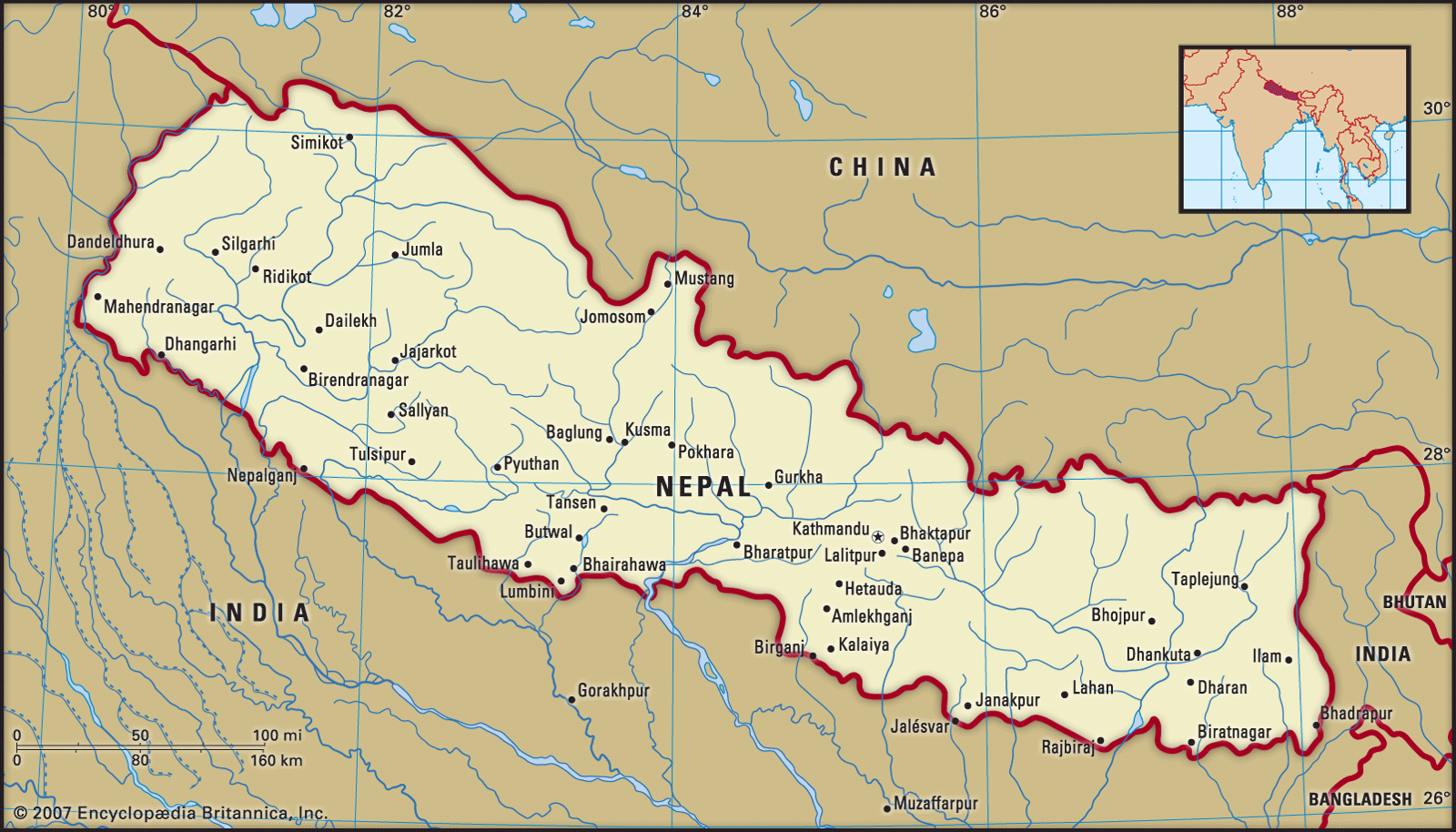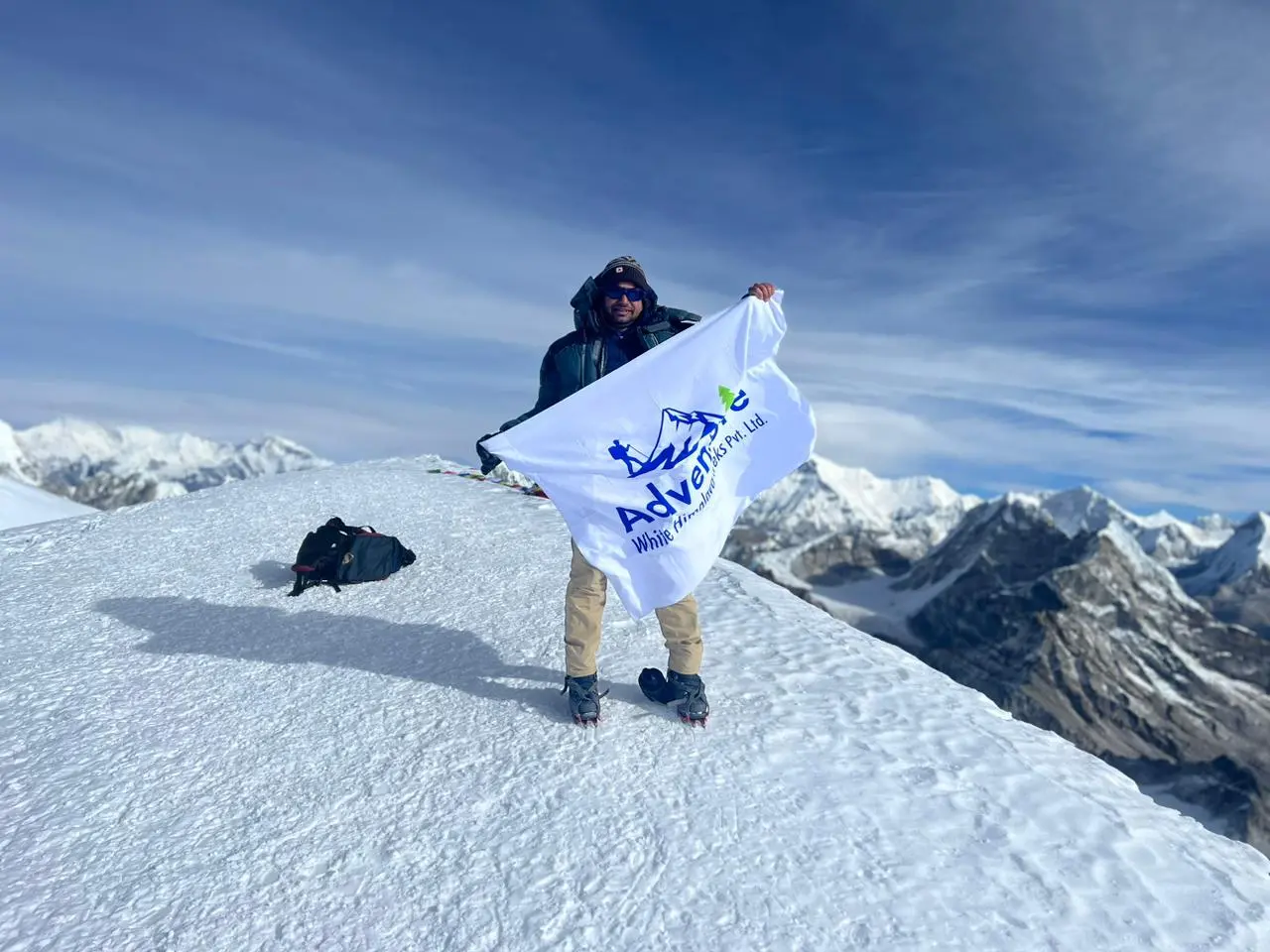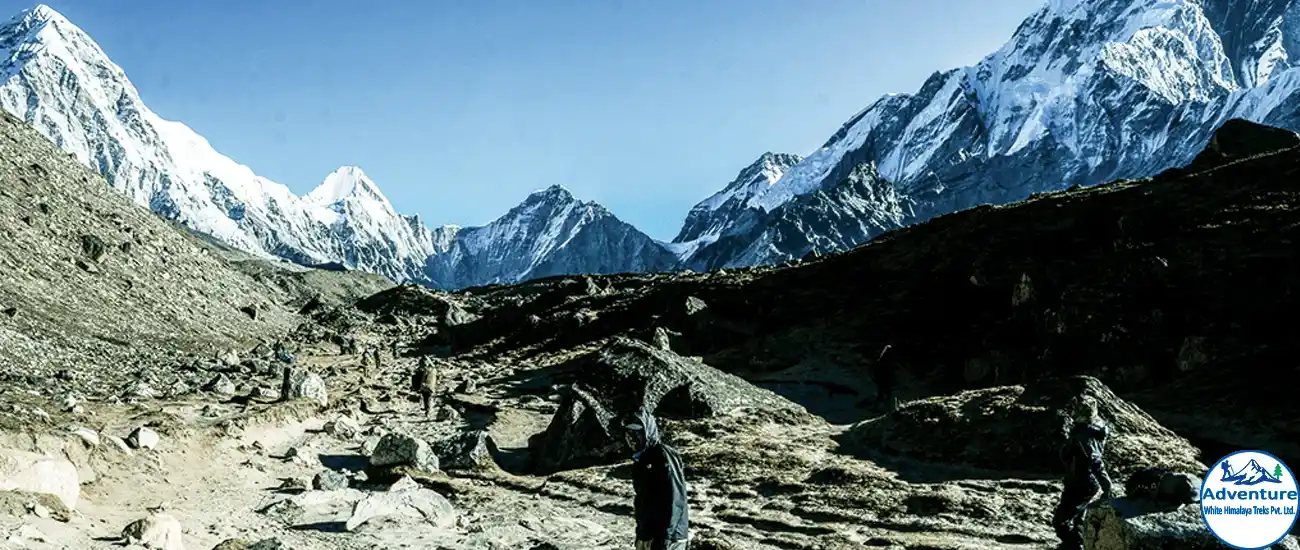Do you have any plans to visit Nepal?

Nepal: A Hidden Gem of Asia
Nepal is a small country tucked between the giant Himalayas and the wide plains of India. Many people don’t know much about it, but it’s one of the most beautiful places in the world. Known for its incredible landscapes and rich culture, Nepal is often called a hidden gem waiting to be discovered. It’s home to amazing natural wonders like the Annapurna range and Mount Everest, the tallest mountain on Earth. But there’s more to Nepal than just mountains—it has a deep culture, spiritual traditions, and kind-hearted people who make you feel welcome everywhere you go.
In Nepal, you can walk through peaceful valleys, hike through thick jungles, and climb some of the world’s most famous mountains all in one trip. Nepal’s culture is just as stunning as its scenery. You’ll find ancient traditions, colorful festivals, and a mix of Hindu and Buddhist influences. The diversity in Nepal is something special, and it’s a country where you can explore busy markets in the capital city of Kathmandu and visit quiet monasteries tucked in the hills. Whether you’re looking for adventure, peace, or culture, Nepal has something for everyone.
Discover the Beauty of Nepal
A Land of Different Landscapes
Nepal is a place where nature is at its best. It has everything from high snowy mountains to flat green plains. The famous Himalayas, including Mount Everest, are in the north. These towering mountains attract climbers and trekkers from all over the world. The peaks, covered in snow, make the skyline look magical.
In the middle of Nepal, you’ll find hills and valleys, especially in the Annapurna region. These areas are known for their green farms that look like steps going up the hills. Trekkers love walking through this area, passing through forests of colorful rhododendrons and crossing bridges over rivers. The views of the snow-covered mountains are breathtaking.
Down south in the Terai plains, the land is very different. This region is full of thick jungles and rich farmland. It’s home to Chitwan National Park, where you can see animals like Bengal tigers and one-horned rhinos on a jungle safari. In Nepal, you can trek through mountains one day and explore the jungle the next—few places offer such variety!
A Cultural Melting Pot
Nepal is not just about beautiful landscapes. It’s also full of different cultures, languages, and religions. There are over 100 ethnic groups in Nepal, and each one brings its own traditions and customs. Some of the largest groups include the Sherpas, Brahmins, Chhetris, and Newars.
One amazing thing about Nepal is how different religions live together peacefully. Most people in Nepal are Hindus, but there are also many Buddhists. You’ll see temples, stupas (dome-shaped buildings), and shrines for both religions standing side by side, especially in the Kathmandu Valley. In the Himalayan areas, you’ll find Buddhist monasteries, where monks live in peace, surrounded by nature.
Nepal’s culture comes alive during its many festivals. Dashain is the biggest festival, celebrating the victory of good over evil with family gatherings and feasts. Tihar, the festival of lights, lights up homes and streets to honor the goddess of wealth. Buddhists celebrate Losar, the Tibetan New Year, with prayers and dancing in the mountains. These festivals are a great way to experience Nepal’s rich traditions and joy.
A Trekker’s Paradise
Nepal is a dream come true for trekkers. It has some of the best hiking routes in the world, offering incredible views and unforgettable experiences. No matter if you’re an experienced hiker or a beginner, Nepal has the perfect trek for you.
The Annapurna Circuit is one of the most popular trekking routes. It takes you through valleys, forests, and high mountain passes, offering beautiful views of the Annapurna range. You’ll also pass through villages where you can experience the local culture and hospitality.
The Everest Base Camp Trek is another famous trail. It’s a must-do for many trekkers who want to see the world’s tallest mountain up close. This trek takes you through Sherpa villages, ancient monasteries, and up to the base of Mount Everest. Along the way, you’ll enjoy amazing views of Everest and the surrounding peaks.
If you prefer a quieter trek, the Langtang Valley Trek is a hidden gem. It’s less crowded but just as beautiful, with glaciers, wildlife, and stunning landscapes. Plus, it’s close to Kathmandu, making it an easy option for trekkers who want to explore the mountains without going too far.
Tips for Trekking in Nepal:
- Best Time to Trek: The best months for trekking are from March to May and September to November. During these times, the weather is clear, and you’ll get the best views of the mountains.
- Acclimatization: Nepal’s high altitudes can be tough, so it’s important to take your time and get used to the height. Plan rest days and go slowly to avoid getting sick.
- Hire Local Guides and Porters: Hiring a local guide or porter helps you learn more about the culture and support the local community. They also know the area well and can help keep you safe on your trek.
Nepal’s trekking routes are more than just walks—they’re journeys where you connect with nature, face challenges, and find a deep sense of peace. Each step brings you closer to the beauty of Nepal’s mountains and people.
Exploring Nepal’s Rich History
Nepal has a long, fascinating history, filled with ancient kingdoms, powerful rulers, and a mix of cultures. This small country, nestled between India and China, has a unique story that has shaped who it is today.
Nepal’s Ancient History and Kingdoms
Nepal’s history goes way back, with stories from Hindu mythology saying it was once home to wise sages who meditated in the Himalayas. But the first real evidence of a kingdom comes from the Licchavi Dynasty (around 400-750 CE). These rulers made the Kathmandu Valley their center, and they are known for building beautiful temples and sculptures, which you can still see today.
After the Licchavis, the Malla kings ruled from the 12th to the 18th century. This time is known as a “golden age” for Nepal because of all the amazing art, buildings, and culture that flourished. The Malla kings were big supporters of both Hinduism and Buddhism, and their grand palaces and temples in Kathmandu, Bhaktapur, and Patan still stand as UNESCO World Heritage sites.
The Shah Dynasty: Uniting Nepal
Before the Shah dynasty, Nepal was split into many small kingdoms. Then came King Prithvi Narayan Shah of the Gorkha Kingdom, who decided to unite all these little states into one big nation. His efforts in the mid-18th century led to the unification of Nepal in 1768, with the capture of the Kathmandu Valley.
Prithvi Narayan Shah is seen as a national hero because he not only united Nepal but also kept it independent from British control when they were taking over other South Asian kingdoms. Thanks to him, Nepal stayed free, while many neighboring countries were colonized.
The Shah dynasty ruled Nepal for over 200 years. One important moment was in the 1950s when King Tribhuvan helped end the rule of the Ranas (a powerful family that controlled Nepal for over 100 years) and started Nepal’s path toward democracy.
Important Events and People in Nepal’s History
Nepal’s history includes many key events and leaders. Besides King Prithvi Narayan Shah, another powerful figure was Jang Bahadur Rana, who took control in the 19th century and started the Rana regime. The Ranas ruled for over 100 years, keeping the Shah kings as figureheads while they held real power. Their rule ended in 1951 when democratic forces, supported by King Tribhuvan, overthrew them.
Another major event was the signing of the Sugauli Treaty in 1816, after a war with the British East India Company. Nepal lost some territory but kept its independence, which was a big deal at the time.
In the 20th century, King Mahendra dissolved the new democratic government in 1960 and brought back a system where only the monarchy had power. This lasted until 1990, when a people’s movement led to a constitutional monarchy and a multi-party democracy.
More recently, Nepal experienced a civil war from 1996 to 2006. The Maoists, a group fighting for communist rule, clashed with the government, and in 2008, Nepal became a republic, ending the monarchy for good.
Nepal’s history, from ancient kingdoms to its current democratic republic, shows its ability to change and adapt while holding on to its rich culture. This journey of resilience and transformation has shaped the nation into what it is today.
Discover Nepali Culture
Nepal’s culture is like a colorful quilt, made from many different traditions, religions, and communities. Every part of life in Nepal—from food to music, arts, and festivals—shows the richness of its heritage. As a visitor, you’ll find many ways to feel connected to the warmth and spirit of the country.
Nepali Food: A Taste of Tradition
One of the best ways to experience Nepal’s culture is through its food. Nepali dishes are full of flavors influenced by both India and Tibet. The meals are simple yet filling, often made with fresh, local ingredients.
Dal Bhat is the most common meal in Nepal. It’s made up of lentil soup (dal) served with rice (bhat) and comes with vegetables, pickles, and sometimes meat. People eat it every day, and it shows how important farming is in Nepal.
Momo are popular dumplings found everywhere in Nepal. They come from Tibetan food traditions. Momos are stuffed with meat (like buffalo, chicken, or pork) or vegetables. You can eat them steamed or fried, with a tangy dipping sauce called achar.
Thukpa is a warm noodle soup, also from Tibet. It’s enjoyed in the colder parts of Nepal and is perfect after a day of trekking.
Gundruk is a famous Nepali dish made from fermented leafy greens. It’s often served as a side dish or added to soups. This dish is important because it helps people preserve food for winter.
Nepali food is tied to the farming life, using fresh ingredients that are healthy and tasty. Wherever you travel in Nepal, make sure to try different traditional dishes—they vary from place to place!
Nepali Music, Dance, and Arts
Music and arts are a big part of life in Nepal. Each region has its own kind of music and instruments. Traditional folk music is played at festivals and celebrations, while modern music like pop and rock is becoming more popular in cities.
Instruments like the sarangi (a stringed instrument) and the madal (a hand drum) are often played during social events. Nepali folk songs tell stories about love, nature, and daily life.
Dance is another important part of Nepali culture. Many ethnic groups have their own unique dances. One of the most famous is the Lakhey dance, where performers wear masks. This dance is believed to bring good luck to the community.
Nepal is also known for its beautiful artwork, especially thangka paintings. These detailed scrolls show Buddhist gods and designs used for meditation. Nepal’s pagoda-style temples and wooden carvings found in places like Kathmandu, Bhaktapur, and Patan also show the country’s deep artistic roots.
Festivals and Celebrations
Nepal’s festivals are full of joy, celebrating its many religions and traditions. Each festival brings people together to celebrate in their own way. Two of the biggest festivals are Dashain and Tihar.
Dashain is the longest and most important Hindu festival in Nepal. It celebrates the victory of the goddess Durga over a demon. Families gather, pray, and enjoy big feasts.
Tihar, or the festival of lights, happens after Dashain. It honors animals like crows, dogs, and cows. The final day of Tihar celebrates the bond between brothers and sisters, who exchange gifts and blessings.
Other popular festivals include Holi, where people throw colorful powders to celebrate spring, and Buddha Jayanti, which marks the birth of Lord Buddha. For Tibetan and Sherpa communities, Losar is the Tibetan New Year, full of dancing and lighting lamps.
Nepal’s festivals are joyful, community-focused events where old traditions and modern life meet. Whether in a busy city or a quiet village, celebrating with the locals gives you a real taste of Nepali culture.
From the Himalayan villages to the lowlands, Nepal’s culture shines through its music, dance, food, and festivals. Experiencing these traditions will make your visit to Nepal truly unforgettable.
Frequently Asked Questions About Nepal
Traveling to Nepal is exciting, but it’s normal to have some questions before you go. Here are some of the most common questions people ask to help you get ready for your trip and enjoy your time in this amazing country.
Is it Safe to Travel to Nepal?
Yes, Nepal is generally safe for travelers. The people are friendly, and Nepali hospitality is known for being warm and welcoming. However, like in any country, it’s important to be careful. In busy areas, watch out for petty theft or scams. Nepal is also in an earthquake-prone zone, so stay aware of local conditions. Avoid political protests or large gatherings, and follow any travel advice. If you’re trekking in remote areas, it’s a good idea to hire a guide or join a group for extra safety.
What is the Best Time to Visit Nepal?
The best time to visit depends on what you want to do:
- Autumn (September to November): This is the most popular time, especially for trekking. The weather is clear and dry, and you get great views of the mountains. Plus, big festivals like Dashain and Tihar happen during this time.
- Spring (March to May): Another great time for trekking. The weather is mild, and the hills are covered in blooming flowers like rhododendrons.
- Winter (December to February): It gets cold, especially in higher places, but it’s a good time to explore lower regions and cities like Kathmandu and Pokhara.
- Monsoon (June to August): There’s a lot of rain, which can affect travel in the mountains. But the landscapes are green and beautiful, and there are fewer tourists.
What is the Cost of Living in Nepal?
Nepal is a budget-friendly place for travelers. Costs can vary, but here’s a rough idea:
- Accommodation: You can find budget guesthouses for $5 to $10 per night. Fancier hotels might cost $50 to $150 or more in cities like Kathmandu or Pokhara.
- Food: Eating at local places is cheap, with meals costing around $2 to $5. Western-style or nicer restaurants might charge $10 to $20 per meal.
- Transportation: Buses and taxis are inexpensive. Domestic flights to places like Pokhara or Lukla (for Everest trekking) cost around $100 to $200 depending on the route.
If you’re staying longer, your monthly living costs could range from $300 to $1,000, depending on where you stay and how you spend.
What Language is Spoken in Nepal?
Nepali is the official language of Nepal, and most people speak it. It’s similar to Hindi and written in the same script, Devanagari. In tourist areas like Kathmandu and Pokhara, many people also speak English, especially those working in tourism. There are more than 120 local languages spoken across the country, like Maithili, Bhojpuri, Newari, and Tharu. Learning a few Nepali phrases like “Namaste” (Hello) or “Dhanyabad” (Thank you) can make your experience even better.
More FAQs About Nepal
Do I need a visa to enter Nepal?
Yes, most visitors need a visa, which you can get on arrival at the airport or land borders. Tourist visas are available for 15 to 90 days.
What currency is used in Nepal?
The currency is the Nepalese Rupee (NPR). ATMs are available in cities, but it’s smart to carry cash when visiting rural areas.
Are vaccinations required for Nepal?
No vaccines are required to enter Nepal, but it’s a good idea to be up-to-date on routine vaccines. Vaccinations for hepatitis A and B, typhoid, and rabies might be recommended depending on your activities.
These answers should help you get ready for your adventure in Nepal. It’s always a good idea to do some extra research or talk to local travel experts based on what you plan to do.



